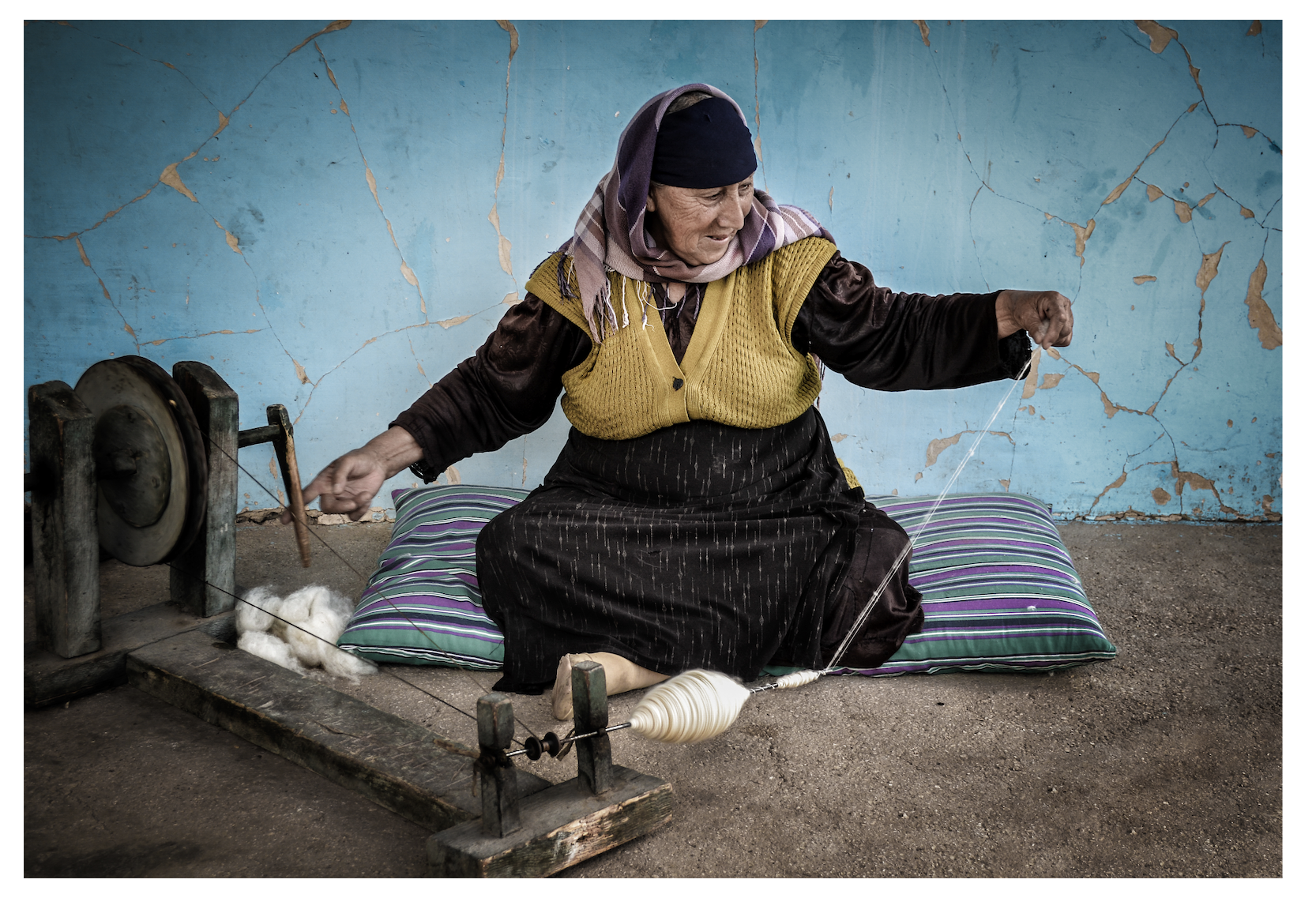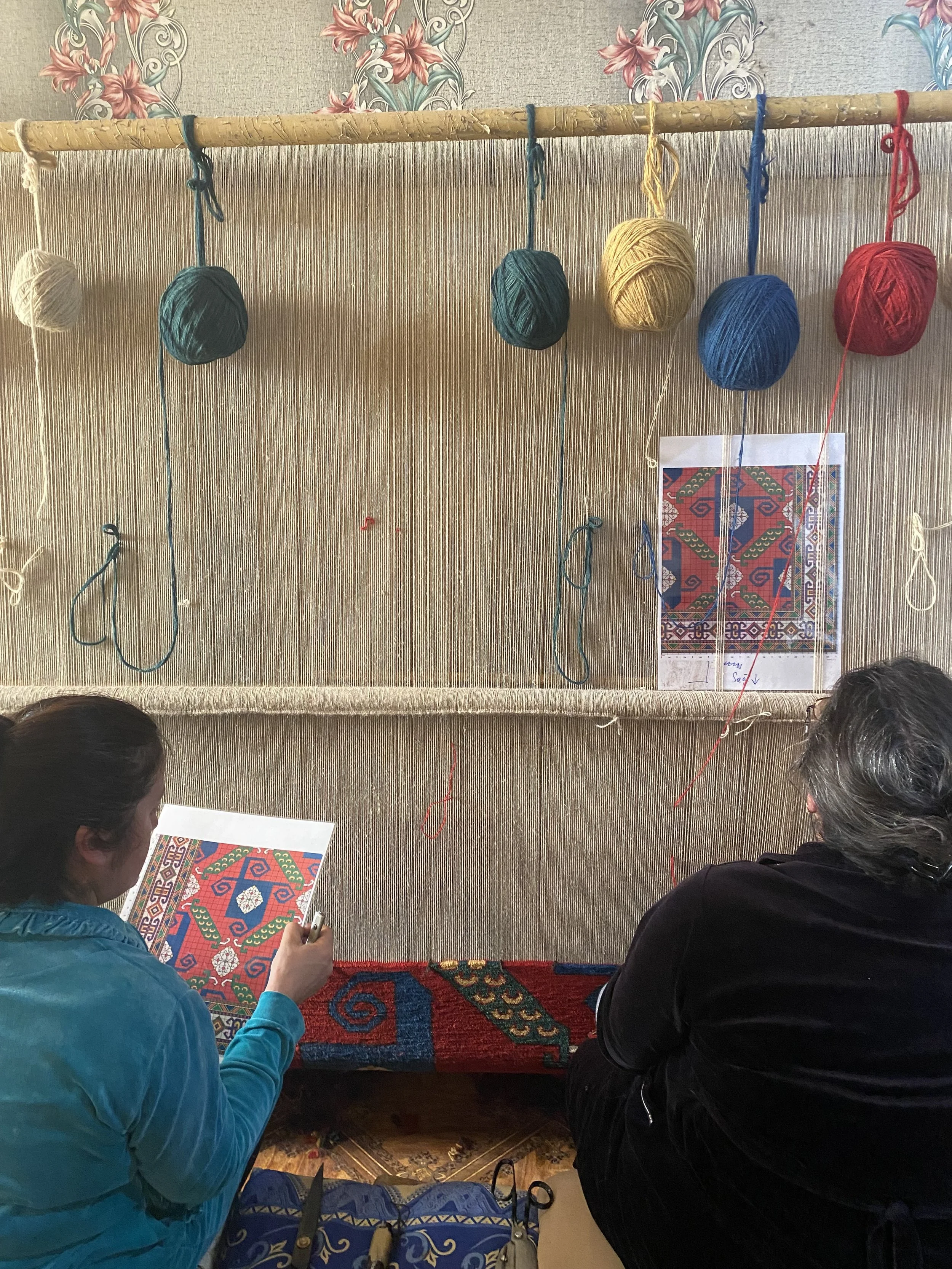Wool
The story of weaving starts with wool. Sheep remain an important livelihood in Georgia and throughout the Caucasus. The lustrous wool of the region has a historical reputation, and antique rugs continue to fetch high prices at auction. What sets them apart? Rugs from Karachopt and Bordjalou usually have a long ‘pile’ and a looser weave, resulting in an almost shaggy silkiness which when combined with jewel-like colours and striking designs makes them almost irresistible. It is reWoven’s mission to keep the tradition of weaving alive, safeguarding the skills required to create beautiful and regionally authentic rugs. Read on to find out more about the fascinating weaving process.
Spinning
Once the wool is washed and carded, the next step is spinning. Spinning wool by hand is simply the best way to achieve beautiful, high quality yarn, but it is arduous work and takes real skill. Some of our weavers retain this rare talent and we hope to start using their yarn in the near future.
Dyeing
reWoven uses only natural dyes, either ‘vegetable’ (obtained from plants) or mineral dyes (for example indigo). Our red comes from madder root and yellow from mignonette flowers. Black is either undyed dark wool or from iron oxide. Most dyeing currently takes place in a beautiful, old workshop near Baku in Azerbaijan. It is our plan to build a dyeing workshop in Georgia in the near future, to experiment with Georgian dyestuffs and bring this ancient skill closer to home.
Choosing a design
Keeping the art of weaving alive in these villages and providing a sustainable livelihood for the women of these communities is at the heart of reWoven’s mission. The beautiful designs typical of this region’s rugs are an important part of the weaving tradition. In the past, these designs were not simply copied but instead interpreted and adapted according to the preference and inspiration of the weaver. We try to remain true to this, leaving scope for imagination and creativity. The ‘cartoons’ we make for each of our designs are always open for discussion with our weavers, and generally vary in each rug woven. Sometimes this process is compared to music - reliant on improvisation! Take a look at our design archive for inspiration and contact us if you are interested in a commission.
Setting up the loom
Before weaving can begin, the loom must be strung with warps, made from strongly spun wool to withstand the tension. The looms in Kosalar can be over 100 years old, and still in good working order.
Weaving
Weaving is not just a skill, but part of a way of life. In Kosalar and Karachopt, it is a social activity as well as a livelihood. Some weavers have long friendships, and weaving together allows these to be maintained. In this way, some reWoven rugs are not the work of a single weaver, but a combined effort. We are often asked how long a rug takes to weave. This depends on the speed of the weaver and size of the rug, but also on the time of year and personal circumstances. Some weavers are astonishingly quick to finish a rug, others weave when they can, combining this with the demands of their daily lives. We are proud to be able to provide a livelihood that works alongside the lives of these talented women.
Here are some of our rugs, ready to show in Tbilisi! We sometimes exhibit at fairs in Tbilisi or other places in Georgia, keep an eye out for updates!
reWoven works on such a small scale that your support makes a huge and direct difference to these communities. Please do contact us if you are interested in buying a rug or supporting the project, we would be delighted to hear from you.
with thanks to Ieva Andersone and Ryan Carter for the photographs published on this page






